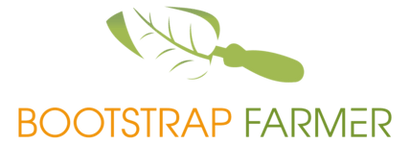Free Shipping on Orders over $75 to the Contiguous US
Free Shipping on Orders over $75 to the Contiguous US
Using the Lower and Lean Method for Indeterminate Tomatoes in a Hoop House
March 12, 2024 5 min read 0 Comments
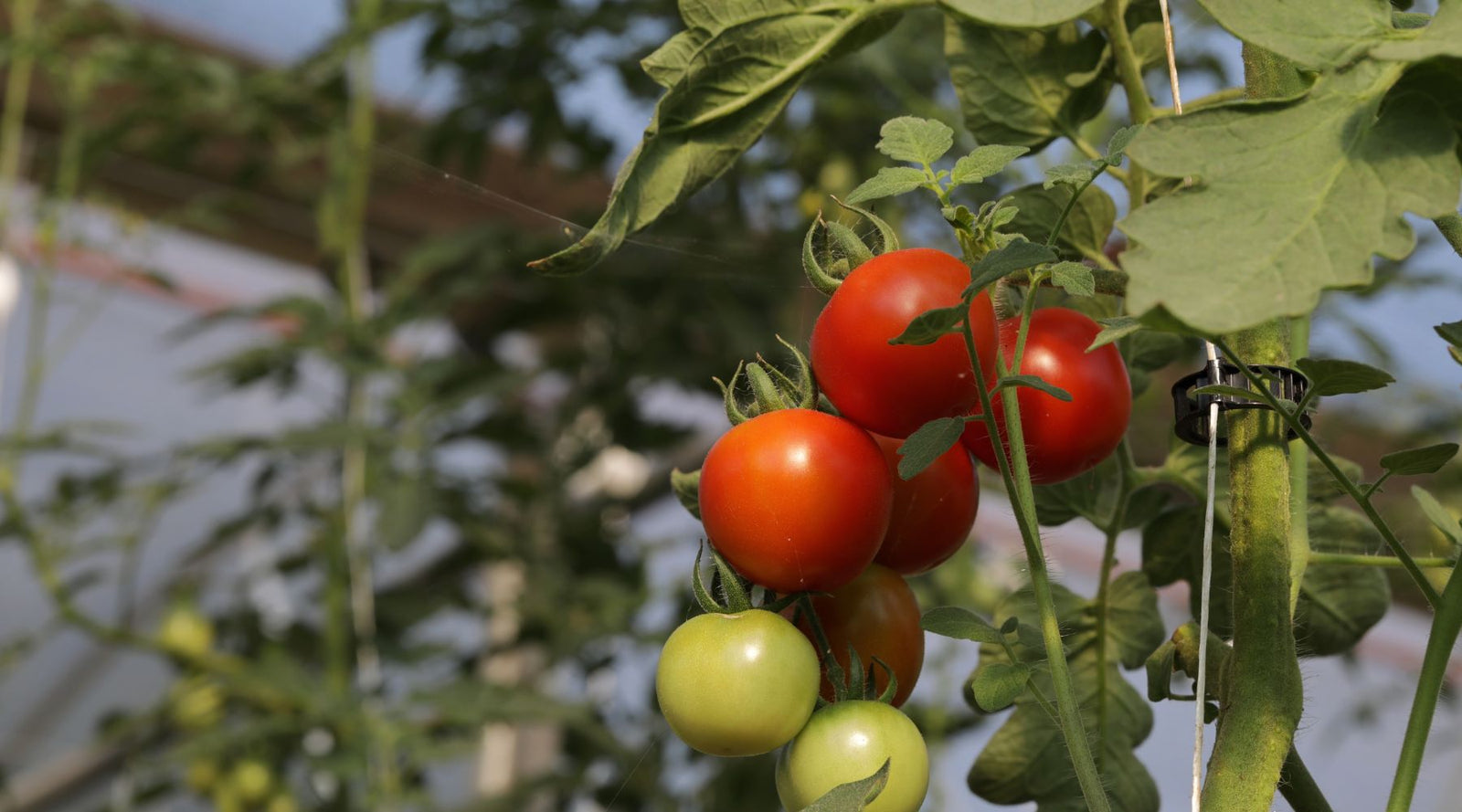
Lower and Lean Method for Growing Hoop House Tomatoes
The lower and lean method of trellising indeterminate tomatoes in a hoop house has many advantages. Ease of working conditions and maximum fruit production are the key features of this style of tomato growing. When done properly, pruning, along with lowering and leaning, will increase productivity and keep your plants healthier.
Why use the lower and lean method for growing hoop house tomatoes?
When you use the right equipment, including support structures, trellis lines, hooks, tomato clips, and a good set of clippers you will see:
- The tomato vine is supported.
- A practical working height for the plant and farmer is established.
- The vines can grow from 40-70 feet long with vigorous fruit production throughout their life.
- Airflow throughout the hoop house is increased, reducing pest pressure and the opportunity for fungal issues to take hold.
- Consistent lowering and leaning of vines keeps you down off a ladder.
Working on a ladder in the hoop house increases the risk of injury, particularly when using both hands to work the plant. It is also darn hot in the upper regions of the house. Keeping your working zone closer to cross ventilation and shade will dramatically improve your comfort level when pruning tomatoes. It also dramatically improves the comfort of your plants.
What is the difference between indeterminate tomato plants and determinate tomatoes?
Indeterminate tomatoes, also referred to as vine tomatoes, have no predetermined height. This type will continue to grow, lengthen and branch over a long growing season. Their flowering time is likewise undetermined, meaning they will continue to flower and fruit as long as proper growing conditions are maintained. Indeterminate tomatoes are the ideal types for trellising.
Determinate or bush tomatoes will grow to a predetermined height, generally between 3-4 feet, and then produce a large quantity of fruit that all ripens within a limited time frame. These types are used most frequently for canning and processing. Determinate tomatoes are better suited to caging or basket-weaving support structures.
Tools you need to lower and lean your tomato plants properly
- Support Structure - Typically in hoop houses, this is a high-wire structure, which we will cover building in the next part of this series.
- Hooks - Used to hold the trellis line to the support structure. We prefer roller hook assemblies that come pre-loaded with a trellis line.
- Trellis Line - Be sure to use UV-resistant lines.
- Stem Clips or Ties - Clips are the fastest option. Order in bulk for the best prices; you will need a lot.
- Clippers - For pruning in tight spaces, we recommend using ones with pointed tips.
How to Choose the Right Tomato Hooks
There are two main types of tomato hooks that hold twine and secure it to a high wire trellis. Nick at Bootstrap Farmer prefers the roller hooks where twine is let down from a pre-rolled spool by squeezing the wire cage assembly. This type allows for easy and precise lowering of the line and hooks securely to trellis wire without tangling.
The other type is made of a single piece of wire bent in a shape that has hooks on both ends and space to wrap twine. They are usually sold according to how the extra twine is wrapped, often referred to as V-hook, O-hook, or horsetail-hook. They have a tendency to tangle easily.
The Four Sections of a Trellised Tomato
When properly trellised using the lower and lean method, the vine has room for the four parts of production:
- The crown and flowering part of the vine where new growth is established. Lowering each plant as it grows will keep this zone out of the hottest part of the hoop house.
- The fruit set and vegetative zone where flowers become fruit clusters and a canopy of leaves help the plant transpire while shading all of the fruit below.
- The ripening and harvest zone is where the fruit can be easily inspected and harvested at a comfortable working height for the farmer. The ideal space for the harvest zone is a level even with the knee-to-shoulder range of the person who will be doing the harvesting.
- The heavy prune zone is where a bare stock is cleaned of old clusters, suckers, and leaves. These pruned parts have served their purpose but are now taking nutrients and water away from the top part of the plant, which is still growing and producing fruit.
This bare pruning helps create airflow at the base, where roll-up side cross ventilation can help keep vines cool and aid in pollination. Keeping this section clear of any growth is one of the most important parts of pruning an indeterminate tomato. The lowering of the vines further helps airflow at the top part of the hoop house where the air is hottest.
Which way do you lean the plants when you trellis tomatoes?
You will alternate directions when leaning the plants to make the most of your available space while trellising tomatoes. As you move each plant, you will leapfrog it past the next plant headed in the opposite direction. This is done by pulling the hook from the support wire and moving around and past the next plant. Carefully attach the top of the vine with a clip below the lead sucker and prune as needed. Depending on your working preferences, you can prune each vine before you lean it or after.
For vines that are overgrown, you may need to prune a significant amount before you lean the plant. It is always easiest to prune the bare stem section before you lower the plant to save too much bending over to cut. When you lower the vine, aim to have the crown around 6 inches below the support wire. This provides ample space at the top of the house to vent and circulate hot air while protecting the new growth.
Some growers will lean plants in groups of two. The first plant or two will head towards the back of the house. The space left by leaning the first plant will make space for you to lean the next plant in line towards the front of the house. Alternate leaning directions as you travel down each row, switching sides as needed to prune comfortably.
How to Manage Tomato Trellises at the End of the Row
When you reach the end of the row, you will wrap the vine past and around existing stems to create the “racetrack” of stems that circles each row. This keeps the vines close to the root section of the plant and out of the foot traffic in your paths. Keeping the bare vines up off the ground and out of the paths makes working the plants much easier. It also keeps the plants from being damaged by an errant boot.
Regular maintenance is key to keeping hoop house tomatoes growing
Keeping up with vine growth in the hoop house is easiest if you plan to prune, lower and lean a day or two after each harvest. Following these steps every week will help you grow tomatoes on wildly productive plants throughout the growing season. Using proper equipment from the outset will keep you and your plants out of the hottest part of the hoop house.
Watch the Lower and Leaning Tomato Vine Video
Watch the Video
Coming up next
In the next part of this series, we will address how to build a trellis system in your hoop house, along with how to calculate what supplies you will need. The fourth part will go over possible issues you will run into in the processes of pruning, lowering and leaning. In that article we will also address what to do if your plants become overgrown. We will also discuss how to succession plant rows for continual harvests throughout your growing season.
Also in Growing Tomatoes
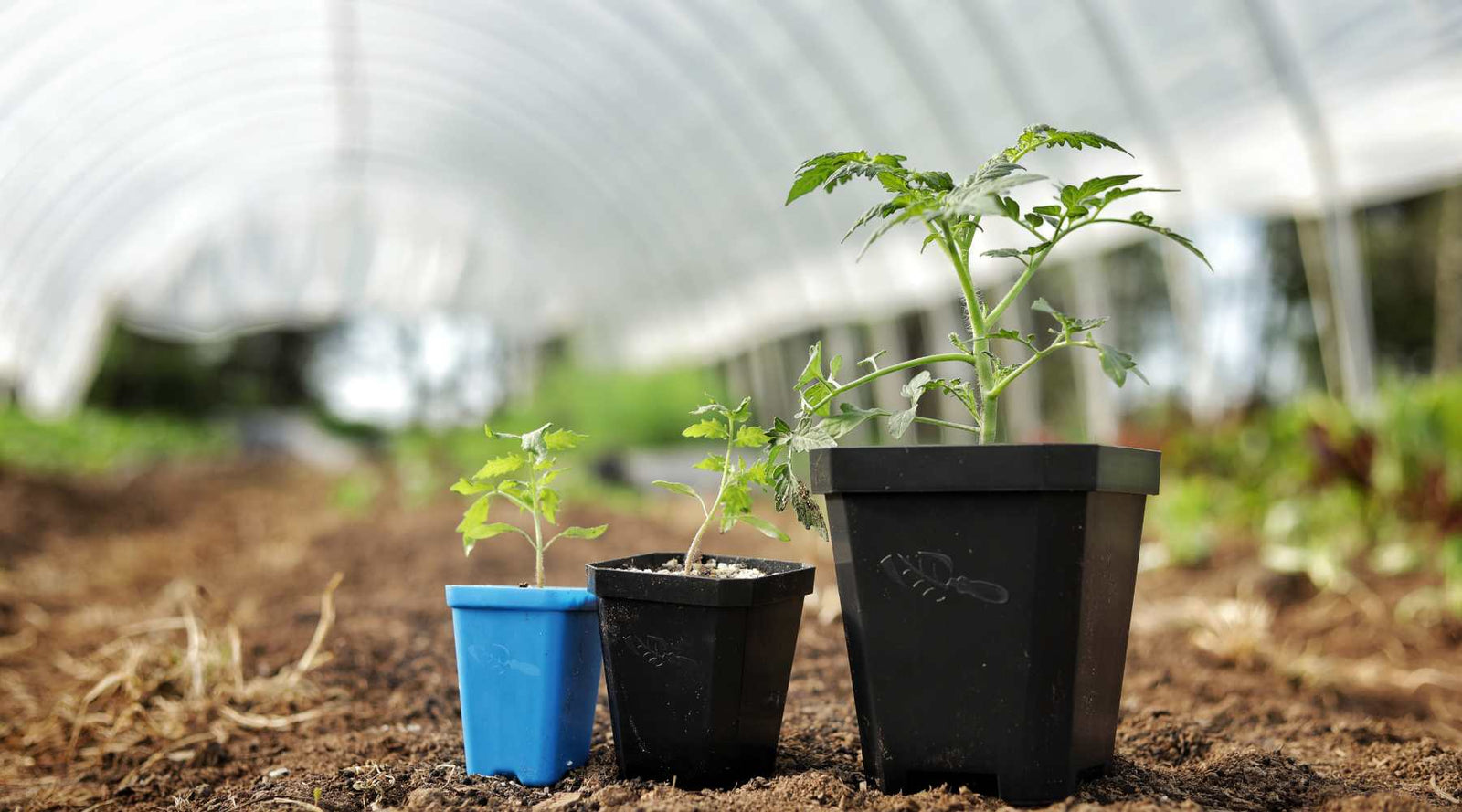
Growing Tomatoes for the Urban Farm
March 17, 2025 6 min read 0 Comments
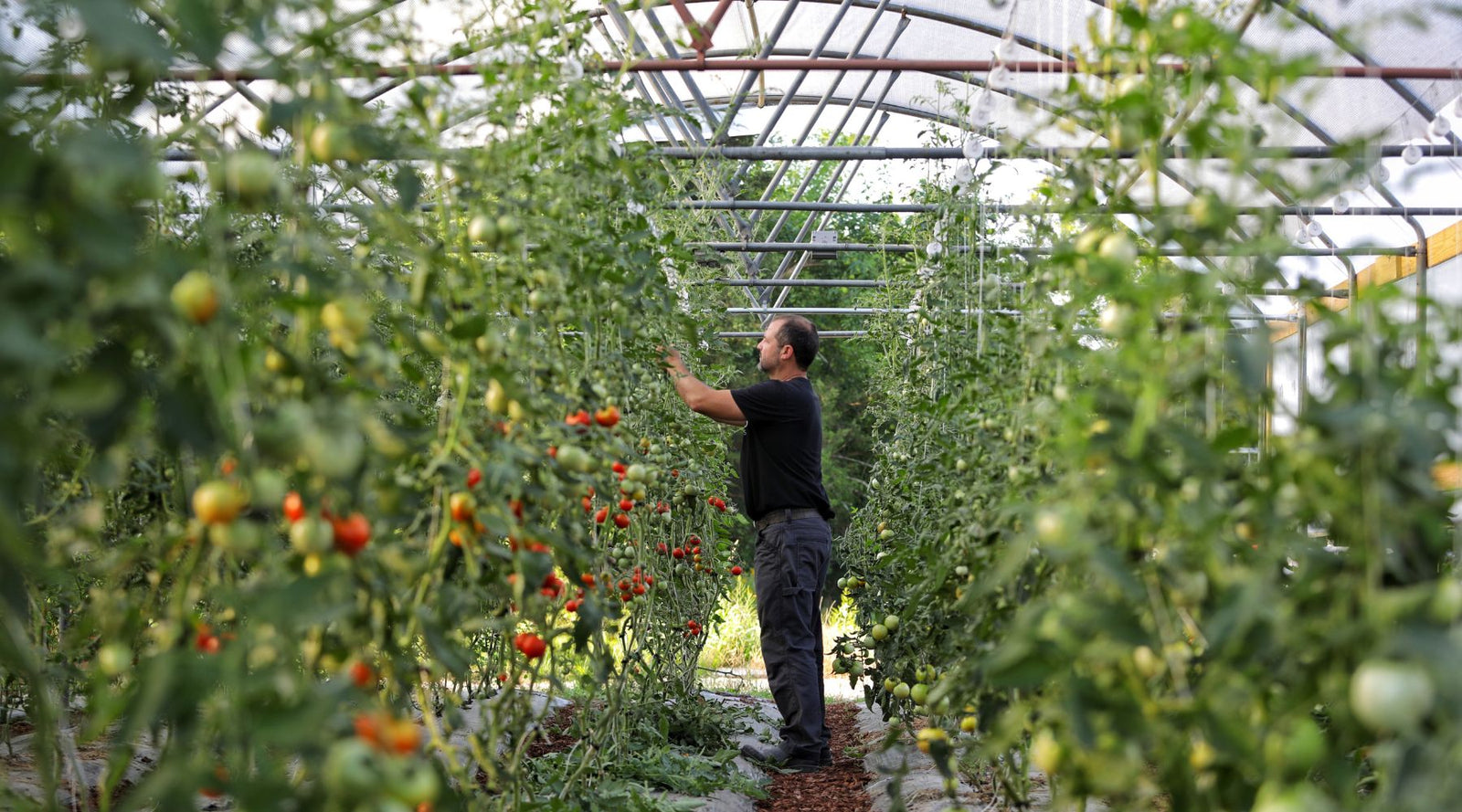
Managing Overgrown Tomatoes
April 03, 2024 10 min read 0 Comments
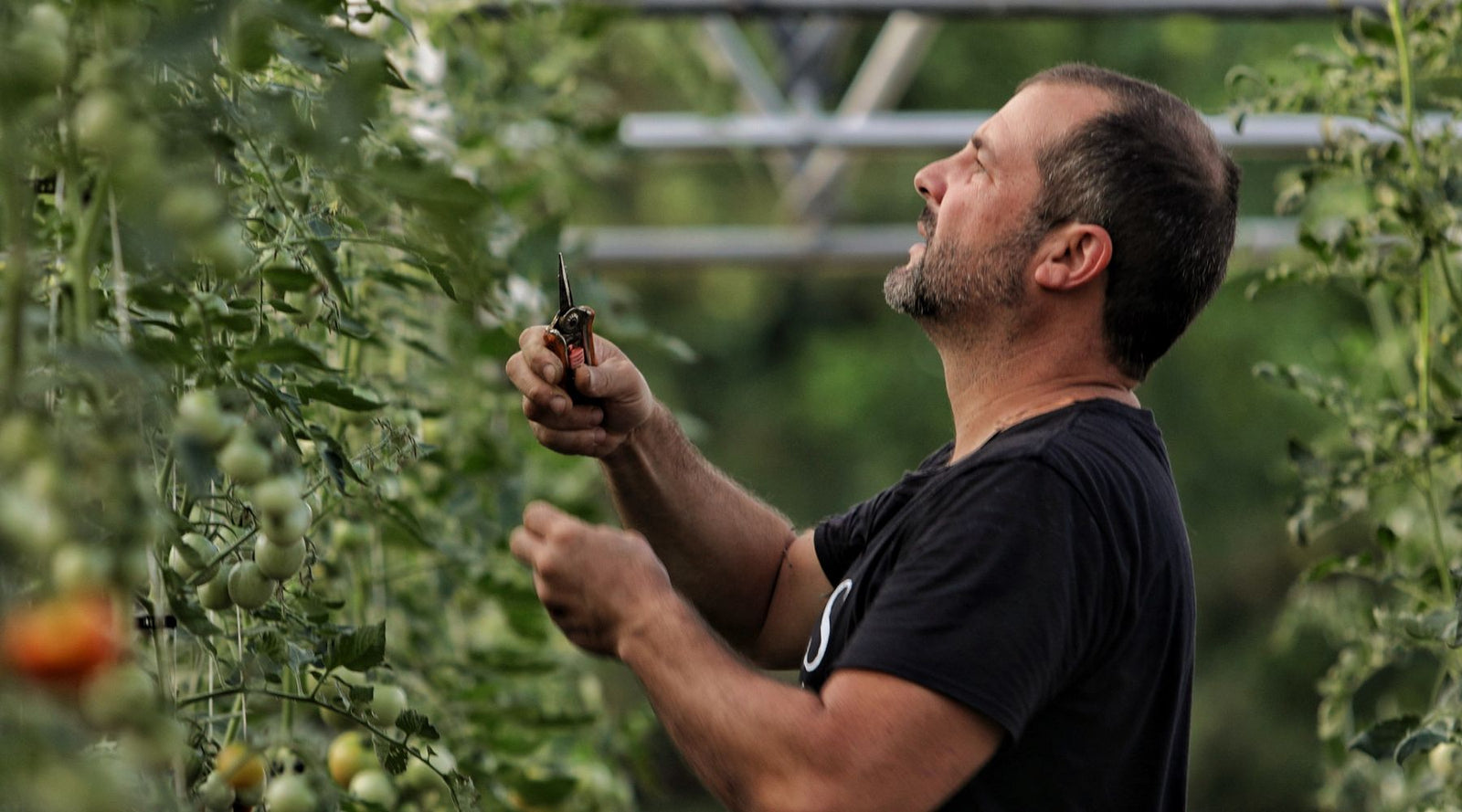
Pruning Indeterminate Tomatoes for Maximum Production in a Hoop House
April 03, 2024 5 min read 0 Comments
Recent Articles
- Growing Tomatoes for the Urban Farm
- Managing Overgrown Tomatoes
- Pruning Indeterminate Tomatoes for Maximum Production in a Hoop House
- Using the Lower and Lean Method for Indeterminate Tomatoes in a Hoop House
- Building Trellis for Indeterminate Tomatoes
- The Ultimate Indoor Tomato Seed Starting Guide for Gardeners
Subscribe
Sign up to get the latest on sales, new releases and more …
